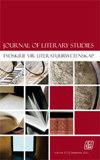Blackface on the South African Stage
IF 0.1
4区 文学
0 LITERARY THEORY & CRITICISM
引用次数: 0
Abstract
In most contemporary studies in which the practice of blackface is discussed, it is seen as a controversial and racist practice. While many studies are available globally on different aspects of this practice (e.g., origin and history, the broad spectrum of media where it is used, different permutations and developments of this practice in various countries, etc.), one finds only a few studies focused on the use and practice of blackface in South African theatre studies. This is surprising when one considers the major role played by race in the general history of South Africa, as well as more specifically within the history of South African theatre. The focus in this article is on the practice and occurrence of blackface on the South African English stage from a historical theatre viewpoint as framed within a postcolonial perspective of this topic. Although one can assert that the practice of blackface was probably simply taken from the origin of this practice in the United States and mainly introduced to South Africa via travelling minstrel troupes from America and travelling theatre companies from the United Kingdom, it is important to see how this practice was received in colonial South Africa. The discussion will first address the use of this practice within early English theatre in South Africa as influenced by the blackface minstrelsy travelling troupes of the 19th century (1830s to 1870s), while the second part of the article will focus on the use of blackface by white actors on the South African stage to portray black characters in the early 20th century (1910 to 1930s).南非舞台上的黑脸
在大多数讨论黑脸做法的当代研究中,它被视为一种有争议的种族主义做法。虽然在全球范围内对这种做法的不同方面进行了许多研究(例如,起源和历史,使用这种做法的广泛媒体,不同国家这种做法的不同排列和发展等),但人们发现只有少数研究关注南非戏剧研究中黑脸的使用和实践。当你考虑到种族在南非的一般历史中,尤其是在南非戏剧史中所扮演的主要角色时,这是令人惊讶的。本文的重点是从历史戏剧的角度出发,在这个主题的后殖民视角框架下,关注南非英语舞台上黑脸的实践和发生。尽管人们可以断言,黑脸的做法可能只是简单地来自美国,主要是通过来自美国的巡回吟游诗人团体和来自英国的巡回剧团传入南非,但重要的是要看看这种做法在殖民地南非是如何被接受的。讨论将首先讨论受19世纪(19世纪30年代至19世纪70年代)黑脸吟游诗人剧团影响的南非早期英国戏剧中这种做法的使用,而文章的第二部分将重点关注20世纪初(1910年至30年代)南非舞台上白人演员使用黑脸来描绘黑人角色。
本文章由计算机程序翻译,如有差异,请以英文原文为准。
求助全文
约1分钟内获得全文
求助全文
来源期刊

Journal of Literary Studies
Multiple-
CiteScore
0.50
自引率
0.00%
发文量
0
期刊介绍:
The Journal of Literary Studies publishes and globally disseminates original and cutting-edge research informed by Literary and Cultural Theory. The Journal is an independent quarterly publication owned and published by the South African Literary Society in partnership with Unisa Press and Taylor & Francis. It is housed and produced in the division Theory of Literature at the University of South Africa and is accredited and subsidised by the South African Department of Higher Education and Training. The aim of the journal is to publish articles and full-length review essays informed by Literary Theory in the General Literary Theory subject area and mostly covering Formalism, New Criticism, Semiotics, Structuralism, Marxism, Poststructuralism, Psychoanalysis, Gender studies, New Historicism, Ecocriticism, Animal Studies, Reception Theory, Comparative Literature, Narrative Theory, Drama Theory, Poetry Theory, and Biography and Autobiography.
 求助内容:
求助内容: 应助结果提醒方式:
应助结果提醒方式:


